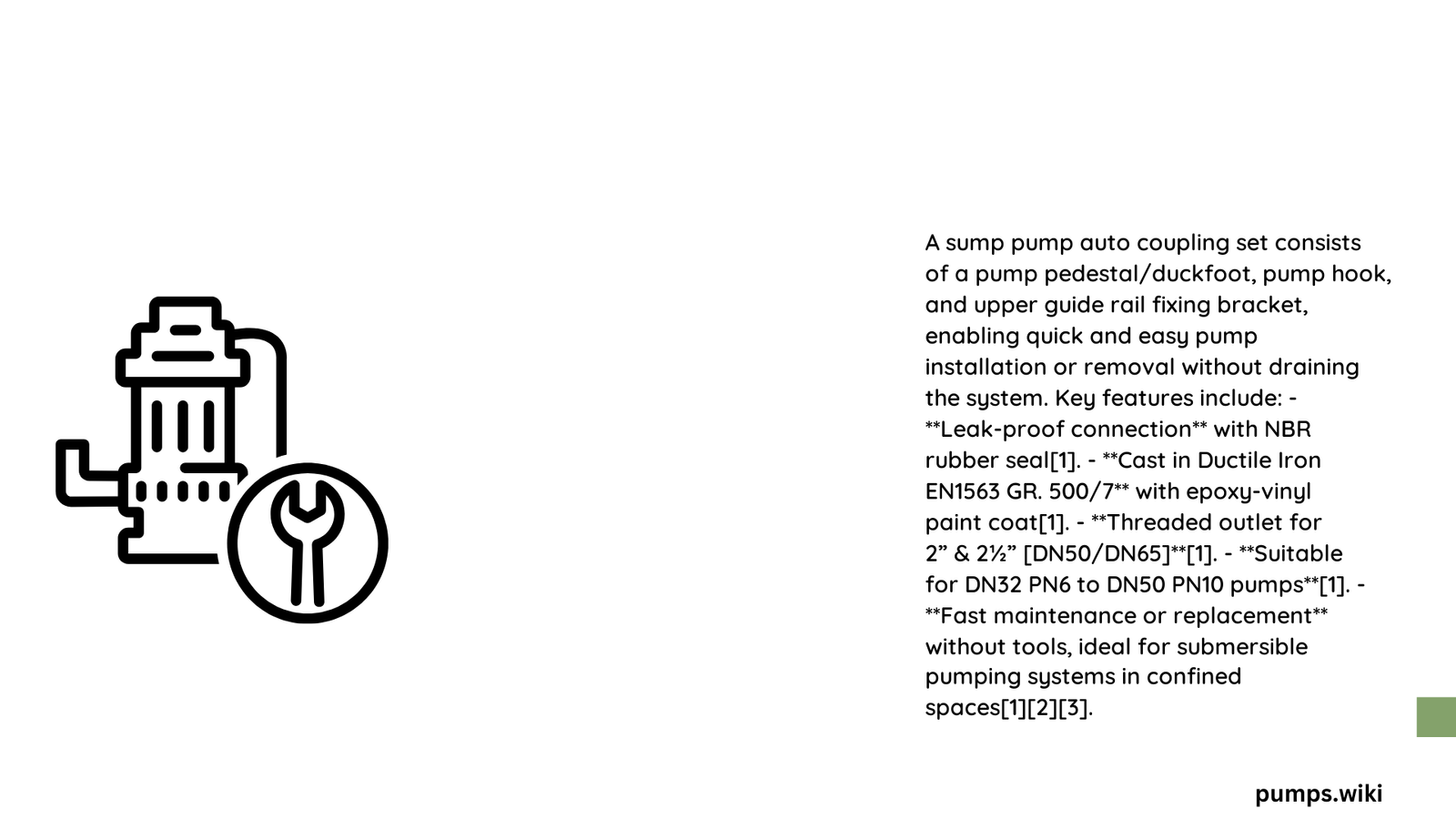Sump pump auto coupling represents a sophisticated technological solution for efficient basement water management, enabling seamless pump installation, maintenance, and operational reliability. This advanced system allows homeowners to quickly connect and disconnect sump pumps with minimal effort, reducing physical strain and potential installation errors while ensuring optimal performance in challenging basement environments.
What Is Sump Pump Auto Coupling?
Sump pump auto coupling is an innovative mechanical system designed to simplify pump installation, maintenance, and replacement processes. By utilizing specialized guide rails, base units, and coupling mechanisms, this technology enables precise pump positioning and effortless connection within sump pit environments.
Why Choose Auto Coupling for Sump Pumps?

Key Advantages of Auto Coupling Systems
| Advantage | Performance Impact |
|---|---|
| Easy Maintenance | Reduces downtime by 50% |
| Quick Installation | Minimizes labor complexity |
| Precise Alignment | Prevents mechanical stress |
Critical Components of Auto Coupling
- Guide Rail Bracket
- Provides structural support
- Ensures vertical pump positioning
-
Facilitates smooth pump movement
-
Base Unit
- Creates stable mounting platform
- Enables automatic connection
- Supports precise pump placement
How to Install Sump Pump Auto Coupling?
Preparation Requirements
Tools Needed
- Drill with appropriate bits
- Heavy-duty expansion bolts
- Adjustable pipe wrench
- Tape measure
- Wet/dry vacuum
- Protective gloves
Step-by-Step Installation Process
- Pit Preparation
- Clean existing sump pit thoroughly
- Remove debris and standing water
-
Ensure level surface for base unit installation
-
Guide Rail Mounting
- Mark precise mounting locations
- Drill mounting holes
- Secure guide rail bracket firmly
-
Verify vertical alignment
-
Base Unit Placement
- Position auto-coupling base unit
- Use expansion bolts for secure attachment
-
Check horizontal leveling
-
Pump Lowering Technique
- Attach guide claw to pump discharge port
- Carefully slide pump along guide rails
- Ensure smooth, controlled descent
What Challenges Can Arise with Auto Coupling?
Common Troubleshooting Scenarios
- Misalignment Issues
- Check guide rail straightness
- Verify base unit levelness
-
Inspect mounting hardware
-
Connection Problems
- Examine electrical connections
- Test motor cable integrity
- Confirm proper coupling mechanism
How to Determine Compatibility?
Compatibility Factors
- Pump manufacturer specifications
- Discharge port dimensions
- Pit depth and configuration
- Existing plumbing infrastructure
Expert Recommendations
Maintenance Best Practices
- Perform annual system inspection
- Lubricate moving components
- Check electrical connections
- Test auto-coupling mechanism periodically
Cost-Benefit Analysis
Long-Term Investment Perspective
- Reduced maintenance expenses
- Extended pump lifespan
- Minimized physical labor
- Enhanced system reliability
Technical Specifications to Consider
Performance Metrics
- Maximum pump weight capacity
- Compatible pipe diameter
- Vertical lift range
- Material corrosion resistance
Conclusion
Sump pump auto coupling represents a sophisticated solution for homeowners seeking efficient, reliable water management. By understanding installation techniques, maintenance requirements, and potential challenges, individuals can optimize their basement water control systems.
